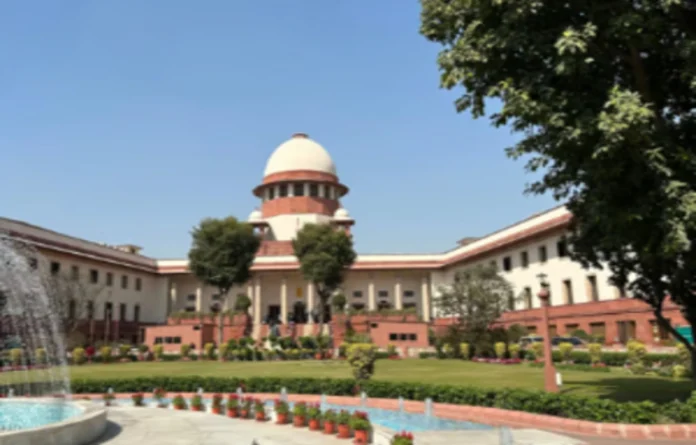The Supreme Court nine-judge Constitution Bench today ruled that royalty paid by mining operators to the Centre is not tax and that the states have the power to levy cesses on mining and mineral use activities.
The judgment was pronounced by the Bench of Chief Justice of India (CJI) DY Chandrachud with Justice Hrishikesh Roy, Justice Abhay S Oka, Justice BV Nagarathna, Justice JB Pardiwala, Justice Manoj Misra, Justice Ujjal Bhuyan, Justice Satish Chandra Sharma and Justice Augustine George Masih. Justice Nagarathna dissented from the majority.
The top court ruled that the Mines and Minerals (Development & Regulation) Act (Mines Act) will not deny the States the power to levy tax on mineral rights. Considering the above conclusion, the top court overruled its 1989 judgment in the case of India Cement Ltd vs. State of Tamil Nadu. Nonetheless, Justice BV Nagarathna dissented on all the conclusions drawn by the majority judges.
While reading the majority judgment, CJI DY Chandrachud said that royalty is not tax. He added that payments made to the government cannot be deemed to be a tax merely because a statute provides for its recovery in arrears. Subsequently, the majority of the Bench observed that states are not denuded of powers to levy cess on mining or related activities.
The majority judgment said that the legislative power to tax mineral rights lies with the State legislature and the Parliament does not have the legislative competence to tax mineral rights under Entry 50 of List 1 since it is a general entry and Parliament cannot use its residuary power regarding this subject matter. It added that the State legislature has the legislative competence under Article 246 read with Entry 49 of List 2 to tax mineral bearing lands
However, Justice BV Nagarathna disagreed on both aspects. She observed that royalty is in the nature of the tax, and the states have no legislative competence to impose any tax or fee on mineral rights. She added that Entry 49 is not related to mineral bearing lands, and India cement decision was correctly decided.
The matter involved the issue of whether State governments are denuded of powers to tax and regulate activities concerning mines and minerals in view of the enactment of the Mines and Minerals (Development & Regulation) Act (Mines Act). It was the oldest pending nine-judge Bench case before the apex court. The Bench had earlier reserved its judgment in the matter on March 14.
The Supreme Court in 1989 had held in the case of India Cement Ltd v State of Tamil Nadu that the royalty is a form of tax under the Mines Act and that the imposition of cesses on such royalty was beyond the States legislative competence.
Earlier in February 1995, a three-judge Bench of the Supreme Court in State of Madhya Pradesh v Mahalaxmi Fabric Mills Ltd upheld Section 9 of the Mines Act and reiterated the 1989 decision.
Later in January 2004, a five-judge Bench in State of West Bengal v Kesoram Industries Ltd by a 3:2 majority held that the 1989 Bench had made a typo and only meant to say that cess on royalty is a form of tax and not the royalty itself.
Following, in March 2011, a three-judge bench held that there was a prima facie conflict between the decisions in the India Cements (1989 judgment) and Kesoram Industries (2004) cases, leading to the reference of the matter to a nine-judge Bench.
Before the nine-judge Bench, the Central government contended that States cannot levy taxes on mineral-bearing lands and that the royalties levied by the Central government eventually go to the States only.
Solicitor General Tushar Mehta said that the development of the mineral industry needs uniformity at a national level failing which fragmented. He added that State-wise levy will adversely impact the development of mineral and systemic utilization of minerals in larger public interest.


